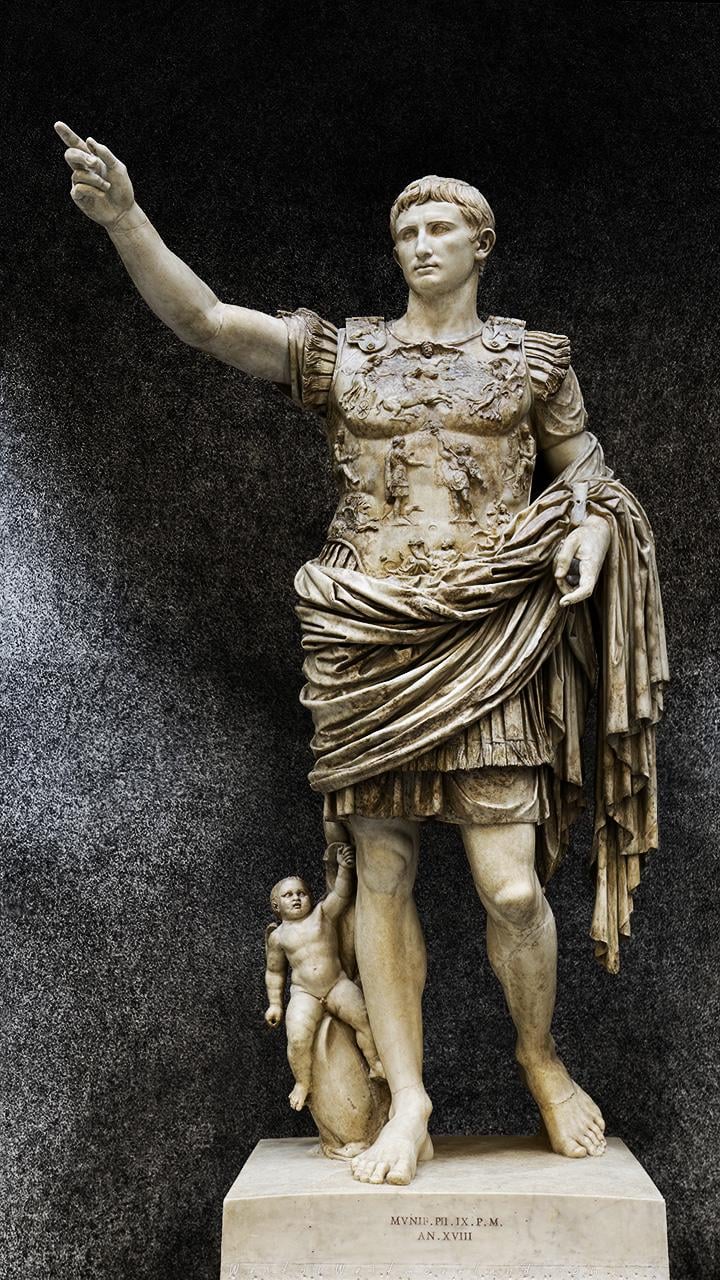
Augustus of Prima Porta, 20 BC. At over 6ft high, this statue was a complex statement of the ideas and merits he wanted to convey. It depicts the emperor addressing his soldiers, wearing a cuirass and a cloak. Augustus was both the first Roman Emperor and the one who ruled longest… [1280×720] [OC]
by WestonWestmoreland

2 Comments
…This statue was found at the Villa of Livia, wife of Augustus, in the Prima Porta area on the Via Flaminia in 1853.
**Not simply a portrait**
Nothing was more important to a Roman emperor than his image. Roman art was closely intertwined with politics and propaganda. This is especially true with portraits of Augustus, the first emperor of the Roman Empire; Augustus invoked the power of imagery to communicate his ideology. The *Augustus of Prima Porta* is one of the ways that the ancients used art for propagandistic purposes. Overall, this statue is not simply a portrait of the emperor, it expresses Augustus’ connection to the past, his role as a military victor, his connection to the gods, and his role as the bringer of the Roman Peace.
At first glance this statue might appear to simply resemble a portrait of Augustus as an orator and general, but this sculpture also communicates a good deal about the emperor’s power and ideology. In fact, in this portrait Augustus shows himself as a great military victor and a staunch supporter of Roman religion. The statue also foretells the 200 year period of peace that Augustus initiated, called the Pax Romana.
**Recalling the Golden Age of ancient Greece**
In this marble freestanding sculpture, Augustus stands in a contrapposto pose (a relaxed pose where one leg bears weight). The emperor wears military regalia and his right arm is outstretched, demonstrating that the emperor is addressing his troops.
Delving further into the composition of the *Prima Porta* statue, a distinct resemblance to Polykleitos’ *Doryphoros*, a Classical Greek sculpture of the fifth century B.C.E., is apparent. Both have a similar contrapposto stance and both are idealized. That is to say that both Augustus and the Spear-Bearer are portrayed as youthful and flawless individuals: they are perfect. The Romans often modeled their art on Greek predecessors. This is significant because Augustus is essentially depicting himself with the perfect body of a Greek athlete: he is youthful and virile, despite the fact that he was middle-aged at the time of the sculpture’s commissioning. Furthermore, by modeling the *Prima Porta* statue on such an iconic Greek sculpture created during the height of Athens’ influence and power, Augustus connects himself to the Golden Age of that previous civilization.
**The cupid and dolphin**
The sculpture contains even more symbolism. At Augustus’ right leg is cupid figure riding a dolphin. The dolphin became a symbol of Augustus’ great naval victory over Mark Antony and Cleopatra at the Battle of Actium in 31 BCE, a conquest that made Augustus the sole ruler of the Empire. The cupid astride the dolphin sends another message too: that Augustus is descended from the gods. Cupid is the son of Venus, the Roman goddess of love. Julius Caesar, the adoptive father of Augustus, claimed to be descended from Venus and therefore Augustus also shared this connection to the gods… (follows in reply)
Was it found exactly like this or is it restored?